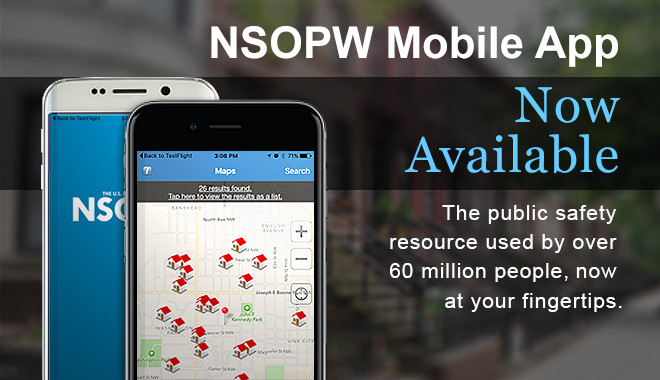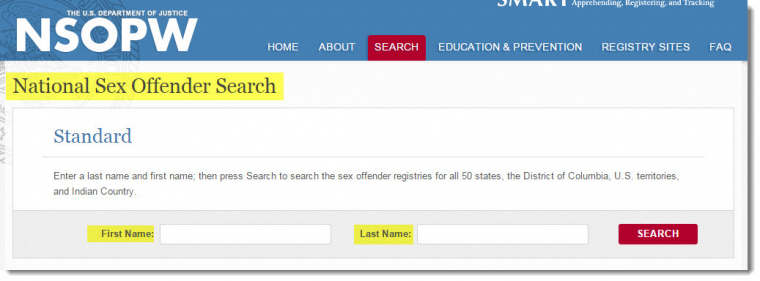When looking for a home to buy, there are a variety of factors you might consider: how many bedrooms it has, what school district it’s located in, whether it has a pool or a large backyard for your dog. A lot of people also look at crime statistics. But have you ever looked to see if a sex offender lives in the neighborhood you’re looking at?
Maybe you’re not moving. Maybe you met someone who just moved into your neighborhood, or at the grocery store. Perhaps your sister just brought home her new boyfriend and he’s giving off a vibe that you don’t like. Whatever the case, knowing how to find out if someone is a sex offender is a very important research skill to have these days.
The good news is, there is sure to be a sex offender registry or sex offender map that can help you find offenders near you. You just have to know where to look, how to look, and how to interpret the information you find.
Sex Offender Levels
The first thing you should know before you search for a sex offender is that there are different levels of sex offenders. These levels indicate the seriousness of the offense they committed, as well as how likely they are to offend again.
What is a level 1 sex offender?
Level 1 is a low-risk level. These are offenders that have been deemed to pose a low risk to the community and aren’t likely to take part in criminal sexual conduct. Typically, their crime was non-violent in nature and with someone over the age of majority. Think of crimes such as public indecency or voyeurism.
What is a level 2 sex offender?
Level 2 is a moderate risk level. These offenders are regarded as a moderate risk to the community because they may continue to indulge in criminal sexual activities. Usually, these crimes are also non-violent, but they involve minors. These crimes could be any new offense by a level 1 offender, or crimes such as sexual contact or sexual acts with someone aged 12-15 or trafficking minors for sex purposes.
What is a level 3 sex offender?
Level 3 is the most serious risk level. These are the offenders that pose the most serious danger to your community and will continue to engage in criminal sexual activities. These crimes can be non-violent or violent. It can be any new offense committed by a level 2 offender, or most sexual assaults, sexual acts with a victim under the age of 12, or sexual acts in which the victim is physically unable to decline.
Of course, the examples of the crimes listed above are not exhaustive.
The levels are determined using a sex offender screening tool. While this tool is effective, it’s important to remember it’s not foolproof. It’s entirely possible for a level 1 offender to commit another crime, and potentially a more serious crime, while a level 3 offender might never again even consider committing another crime. You should keep your guard up around any known sex offenders, regardless of their level.
It’s also important to note that not all databases will provide you with information regarding the levels. You should use your own judgment when determining whether a specific sex offender is a direct threat to you or your children.
How do I find sex offenders near me?
When you’re ready to begin your sex offender search, if you’re like most people, your first search is probably going to be: how to find sex offenders near me or sex offenders in my area.
That’s not necessarily a bad way to start, but you’re going to find more than three million possibilities, with so many maps, lists, and locator options that it can feel overwhelming. Some of them may not have the most up to date information, or accurate information at all.
So, how do you know where to start?
There are a lot of options. You could start by simply visiting your local police station or sheriff’s department (or their website). However, the drawback to this is that if an offender has moved and failed to update their address when they did so, you may not be informed of all the offenders near you.
You could also try relying on the information provided on real estate or neighborhood sites that also provide information about crime statistics, school grades, and more. Like the local police, however, these sites may not have the most up to date information and you could miss out on offenders that haven’t updated their information – or you could miss out simply because the website doesn’t update the information very often in general. There’s also the fact that, because it’s a general, ‘catch-all’ kind of site, it’s unlikely to provide you with all the information you need.
The best place to start would be with a national sex offender registry. This is where you will not only find the details that you’re looking for, but also education and resources to learn more about sex crimes, sex offender registration, and how to protect yourself and your family. The registry also has a sex offender search app for your phone.

The national registry contains identical information to what you would find in your state’s registry, but with a potential additional advantage: if the offender has moved and hasn’t updated their address, you may still find them at their old address, even if it’s out of state.
How to search the national registry

The national registry allows you to search by name, by name and zip code, or by address radius.
Name Search
Searching by name, obviously, only works when you have a particular person that you’re concerned about. You enter their name and see if they come up in the results. Given the size of the nation, chances are high that many people will have the same name, which means you may need to sort through the results you get, narrowing it down based on the photo of the offender, or age, alias, or address.
Name and zip code
Searching by name and zip code is a good way to narrow down the results if you’re searching for a name that is very common. John Doe is likely to turn up thousands of results across the country, but John Doe in your specific zip code is going to give you only a handful, if that many. You can then narrow those down to the specific one you’re looking for. This can also be handy if you suspect someone is sex offender and hasn’t updated their registration. If you know where they used to live, you can use this to try to confirm that information.
Address radius
An address radius search may be the most common search you’ll perform. The national registry allows you to enter an address and search a 1-3 mile radius around that address. You’ll use this if you’re moving, if you’re concerned about offenders living near your child’s school or daycare, to see how many offenders live near your work, or if you suspect that someone in your neighborhood might be an offender. You can enter your own address or any other address.
As a broad search, the address radius search is generally going to be the most helpful to you. It will show you all known sex offenders in the search radius, rather than focusing on one specific name. You’ll be provided with a map, showing a circle for the search radius and house icons marking out each offender within that radius. You can click on the icon to access the offender’s information, or scroll down below the map to look at a list of all the sex offenders found in the radius.
You can click on any of the names to find out more information. In many cases, you’ll be able to find out:
-offender’s name
-aliases they use (or have used)
-address
-current status (on probation, parole, released and required to register, etc.)
adjudication date (the date they were convicted of the offense)
-offense details (the name of the specific crime with which they were charged)
-a description of their physical characteristics (hair and eye color, height, weight,
tattoos or scars, etc.)
-a relatively recent photo
-vehicle information
All of this information can be helpful in identifying known sex offenders in your area, but it’s important to remember that the sex offender list only shows you the people who have been caught and convicted of their crimes. Using a sex offender locator won’t show you those who’ve managed to get away with their crimes.
Of course, once you find a sex offender list that shows you the offenders in your area, the next question is: what to do with this information?
It’s tempting to teach your children to stay away from the people on the list. You should teach them that, in fact. However, there’s more to their safety than simply staying away from those on the list. Again, people on the list are the ones who have been caught. It’s not all the people who’ve committed crimes of that nature. You also should remember that only people convicted after 1970 and still being supervised in September 1997 are on the list. People convicted before that date do not have to register.
You should use the National Sex Offender Public Website’s resources to talk to your children about sexual abuse, come up with a family plan, and find more information. You should teach your children to stay away from strangers, and not to go into the home or yard of a neighbor they don’t know. Family Watchdog also has some excellent resources and a great FAQ to help you out. Educate yourself on the facts, so that you can use the sex offender registry effectively to protect yourself and your family.

